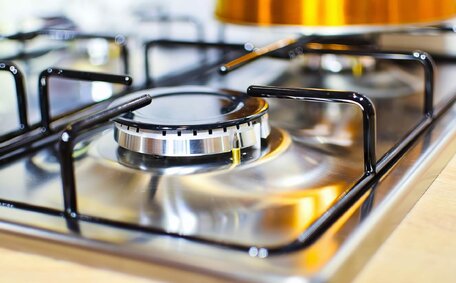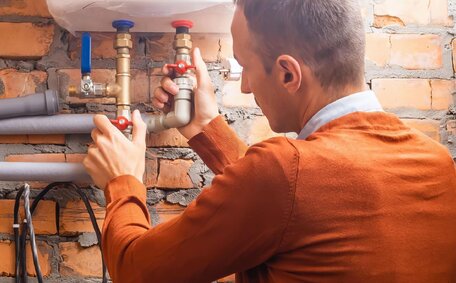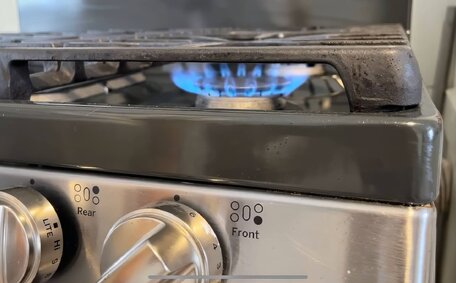Understanding the Hazards of Gas Cylinders
Handling gas cylinders, which contain compressed gases, must be done with rigorous adherence to storage and handling guidelines to mitigate hazards. A gas leak can compromise safe gas cylinder storage, leading to fires, explosions, and poisoning. Even empty gas cylinders can still contain residual gas that poses risks.
The main hazards a gas cylinder store must manage include the following, especially when structural integrity is compromised:
- Fire and explosion hazards from leaking fuel gas cylinders containing flammable gases like propane, acetylene, and hydrogen
- Asphyxiation hazard from displacing oxygen, like with inert gases such as nitrogen and argon
- Poisoning and corrosion hazards from toxic gases like ammonia and chlorine
Gas cylinders, containing pressurised gases, must be stored with caution to prevent mishaps that could cause a dangerous release of gas. Valves can break off if cylinders fall or impact each other, so gas cylinders must be handled with important safety considerations in mind. Heat from a fire can also cause mishandled gas to rupture cylinders and explode.
Implementing correct handling and transportation methods for gas cylinders is critical to risk management and accident prevention. Best practices in gas cylinder safety include restraints, segregation, ventilation, signage and following relevant codes and regulations for transport gas cylinders.
Selecting the Right Location for Gas Cylinder Storage
When selecting an area for gas storage, there are several important criteria to consider for safety:
- Gas cylinders should be stored outdoor in open-air, well-ventilated areas. You should never store gas cylinders in enclosed spaces like sheds, garages or basements.
- Choose a site away from ignition sources that could cause fire or explosion, like heaters, closed type vehicles cargo areas, welding areas and electrical switchboards. There should also be no smoking nearby.
- Ensure cylinder storage does not block walkways, emergency exits or restrict access for emergency services, maintaining clear pathways.
- The ground should be flat and above ground level to prevent cylinders from falling or rolling.
- The location must facilitate upright and secure cylinder storage to prevent them from tipping over.
- Consider exposure to weather elements like rain or extreme heat, and protect cylinders accordingly.
- Consult relevant standards for recommended separation distances between cylinders, buildings, boundaries and other flammables.
Choosing the optimal site by assessing these criteria can ensure safe handling and storage of gas cylinders your organisation uses to minimise risks, thereby protecting people, property and the environment.
Outdoor Storage Requirements
Storing gas cylinders, ensuring gas cylinders gas disperses safely, is crucial for safety. Any leaked gas can disperse into the open atmosphere, which is particularly important when considering how to use gas safely, preventing buildup of hazardous concentrations. Areas in the open air designated to store and use gas cylinders also minimise risks to people and structures if gas ignites.
A gas cylinder storage area should consider factors important for the intended use of gas cylinders:
- Sufficient ventilation to prevent hazardous gas build-up
- Maintain a minimum clearance of 3m from windows, doors, walkways, and escape routes.
- Ensure there’s a minimum 5m distance from any potential ignition sources, including electrical equipment.
- Separation by at least 3 m from storage gas cylinders and flammable or combustible materials
Position cylinders securely upright on level, firm ground with cylinder valves closed using chains, straps or purpose-built cradles. Protect cylinder valves by ensuring caps place securely when not in use. Display clear “No Smoking” signs nearby to prevent confusion and maintain safety.
Refer to Australian Standards such as AS 4332, which mandates a minimum separation of 5m between oxygen and flammable gas cylinders.
Indoor Storage Requirements
Gas cylinders stored indoors should only occur when outdoor storage is not feasible, and strict building requirements must be met.
Use proper construction with fire resistance rating for walls and doors, which is mandatory, along with adequate ventilation at high and low levels to disperse leaked gases. Vent openings should place at strategic locations with at least 30% of the total wall area.
Effectively handling gas cylinders is crucial; they must be firmly secured upright, at least 6 metres from walls and 50cm below ceilings, to prevent damage and facilitate leak inspections. Racks, chains, straps or caged enclosures can be used.
Separate storage lpg type gas cylinders, like propane and acetylene, from oxidising cylinders like oxygen by at least 6 metres or with a fire-rated partition. Place warning signs.
When considering gas cylinders for your storage needs, the store should be located at ground level with direct access outdoors. Compliance with all applicable fire safety and dangerous goods storage regulations is critical.
Securing Gas Cylinders
It’s essential to understand the proper techniques to move cylinders safely to prevent them from falling, rolling, or being knocked over. All cylinders can and must be firmly restrained, whether full, empty, or anywhere in between.
Recommended methods to securely store cylinders include:
- Safety chains or non-combustible straps attached around cylinders and fixed to a wall or other solid structure
- A purpose-built gas bottle cage or enclosure bolted to the ground or wall
- Cylinder racks, cradles or stands with chains or straps to hold cylinders firmly upright
Valve protection caps should be kept on cylinders not in use. Cylinders should always remain upright – do not store lying down. Separate incompatible gases.
Also ensure compressed gas cylinders are not exposed to heat, sunlight or moisture that could damage their integrity. Check signage stays visible and restraints are maintained.
By properly securing all gas cylinders, you ensure cylinders safely handled, reducing risks of leaks, collisions and falling over – preventing injuries and dangerous incidents.
Using Gas Bottle Cages and Restraints
Gas bottle cages and restraints are vital safety devices to secure cylinders properly. A gas bottle cage is a ventilated metal enclosure designed to hold one or more gas cylinders firmly upright. The sturdy cage frame is either bolted to a wall and ground anchors or secured in a standalone frame bolted to the floor.
Safety restraints such as chains or straps also immobilise cylinders within the cages. These restraints wrap securely around cylinders and connect back to the cage frame.
Cages help prevent cylinder movement and protect valves and fittings from damage or tampering. Gas bottle cages can accommodate different cylinder sizes, typically 9 kg to 50 kg capacity.
Another benefit of gas bottle cages is restricting access to gas cylinders, so only authorised personnel can handle them. Lockable cages provide security.
Cylinders within cages must be kept upright for proper valve operation and ensuring liquid petroleum gas remains safely at the base.
Gas bottle cages and restraints are essential safety features that should be included in all gas cylinder storage areas. They are a robust engineering control that is simple and effective for securing gas cylinders.
Segregating and Separating Gas Cylinders
Knowing how to handle gas bottles by correctly segregating different gas types into designated areas is imperative when storing cylinders. Incompatible gases can react dangerously if stored together.
Key principles for segregating gas cylinders include:
- Group cylinders by class, such as flammable, oxidising, or toxic/corrosive gases.
- Store fuel gases and oxygen at least 3m apart to minimise explosion risks.
- Position cylinders to allow for leak inspections and emergency access
- Use signage to clearly identify and designate storage areas
- Where space is limited, separate groups with fire-rated partitions extending 30cm beyond cylinders
Proper segregation also includes separating full cylinders from lpg cylinders labelled as empty, to delineate residual gas potential. Empty cylinders should still be considered to have residual gas and should be labelled as empty or purged.
Adhering to segregation rules ensures safe handling and reduces chances of incompatible gases mixing. Design your storage layout to allow adequate group separation distances for safety.
Required Signage and Labeling
Clear and prominent signage is a mandatory requirement enforced by SafeWork Australia for the safe handling gas cylinders.
Signage should include:
- Hazard placards indicating toxic flammable gas, oxidizer, or toxic gas as applicable
- "No Smoking" signs given the fire hazard risk
- Identification signs showing the names of gases stored
- Handling instructions and procedures
- Emergency contact information
- Restricted access warnings for authorised personnel only
Signs must use standardised pictograms, hazard statements, and signal words. All text should be clear, legible and permanent. Place signs prominently at entrances to cylinder storage areas as well as on individual segregated storage zones.
Proper labelling, which should include gas type, hazards, supplier details, test dates, and applicable standards, is also mandatory on each cylinder. Do not obstruct labels.
Adequate safety signs and cylinder labels are vital when storing gas cylinders in a well ventilated area, ensuring risks are communicated and handling errors are avoided.
Ventilation and Environmental Considerations
Proper ventilation is vital for any gas cylinders storage area to prevent dangerous accumulation of leaked gases. Both natural and mechanical ventilation methods can be used in cylinders storage areas, including those storing lpg gas.
Natural ventilation should accommodate for gases heavier than air, relying on natural air flow through open doors, windows or vents. There should be ventilation openings at high and low levels to allow gases to disperse. Open-sided weather shelters with a roof can also provide good natural ventilation.
Mechanical ventilation should provided use of powered exhaust fans and ducting to actively extract air and ensure 10 air changes per hour. Explosion-protected ventilation systems may be required for flammable gases.
Make sure the ventilation system design includes key factors:
- Sufficient capacity to prevent gas accumulation
- Extraction located where gases may leak, near floor level
- Activation by gas detectors if dangerous levels are detected
- Explosion protection for flammable gas applications
Ventilation helps prevent the buildup of toxic or flammable gas concentrations. All indoor and enclosed outdoor cylinder stores require careful ventilation planning for safety.
Compliance With Standards and Regulations
It is crucial to comply with all relevant Australian standards and regulations when storing gas cylinders. This ensures storage is designed and managed safely by law.
Key standards to adhere to for the handling and storage of gas cylinders are:
- AS 4332 - The handling storing of gases in cylinders
- AS/NZS 1596 - The storage and handling of lpg cylinders
- AS 3780 - The storage and handling of corrosive substances
- AS 1940 - The storage and handling of flammable and combustible liquids
Regulations are set by SafeWork Australia and the gas association with state authorities, aligned with the code practice for handling gases. Requirements cover storage layouts, ventilation, fire protection, signage and more. Non-compliance can lead to heavy fines or prosecution.
Conduct a risk assessment and consider how can you manage your gas cylinder storage and handling processes. Maintain full legal compliance with all applicable standards through regular safety audits and inspections.
For further guidance on safe storage solutions for gas cylinders and high-quality gas fitting services, please contact Mascot Plumbing on 1300 349 338 or [email protected].






